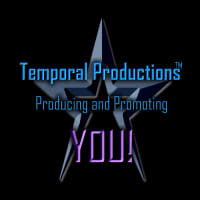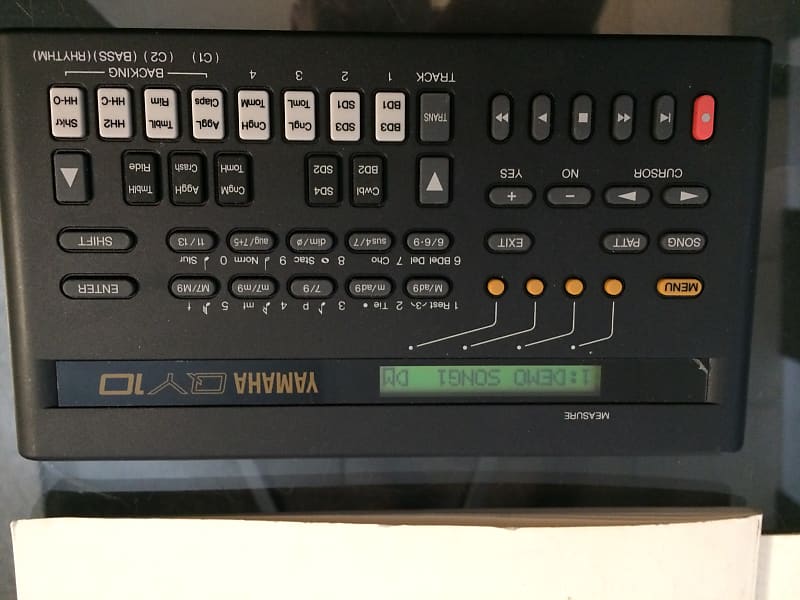

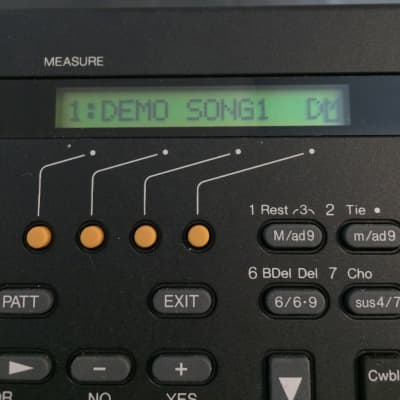
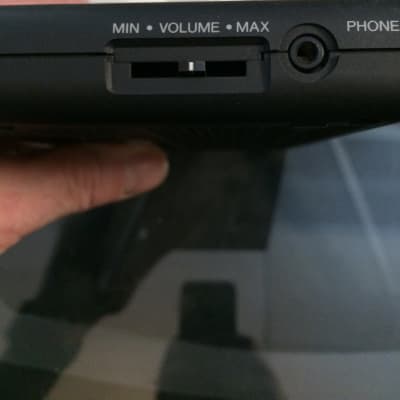
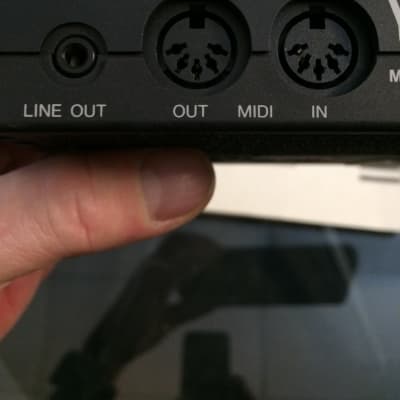
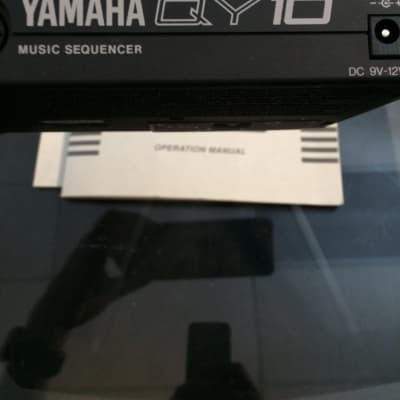
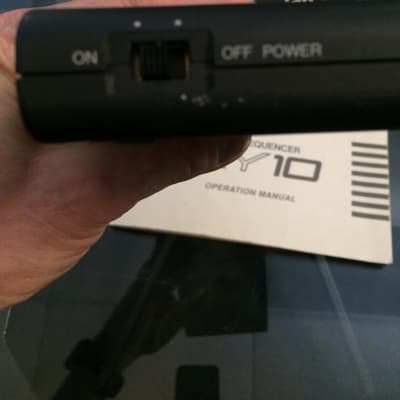
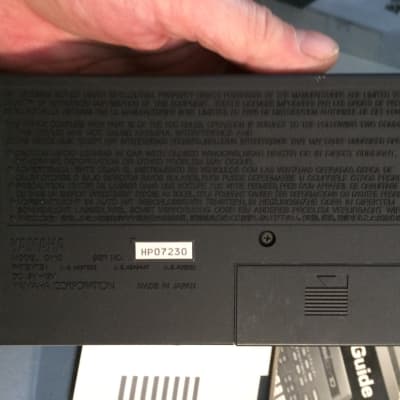
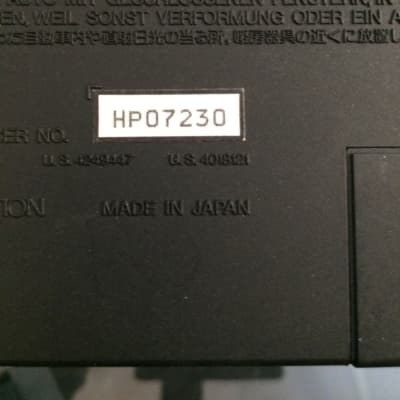
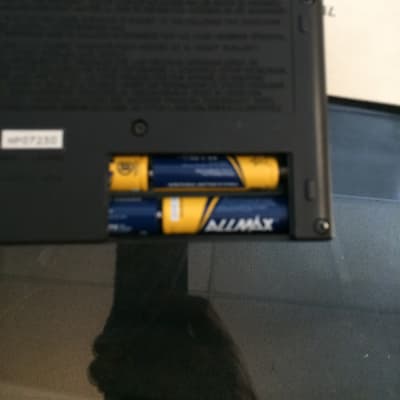
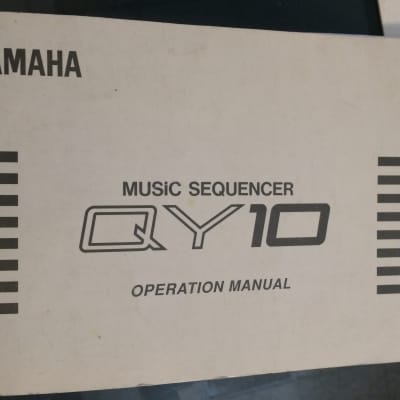
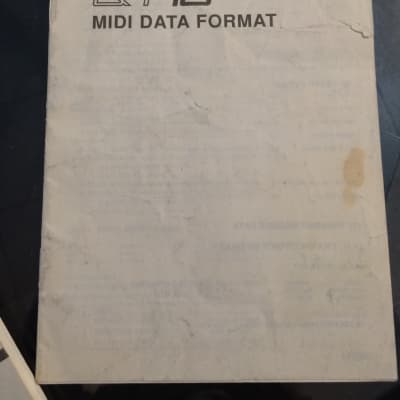
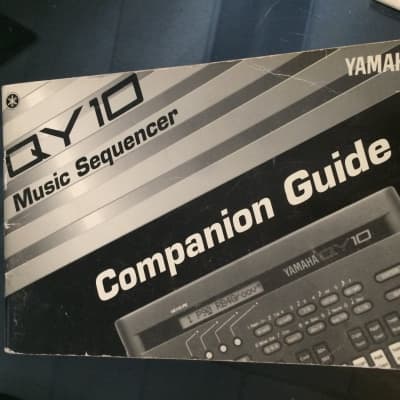
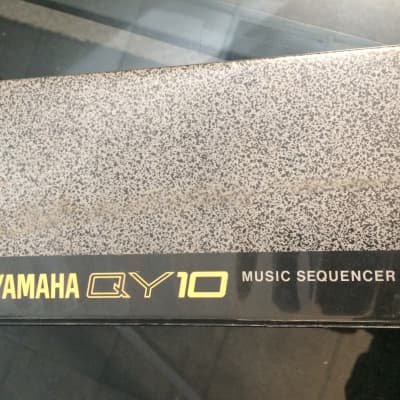
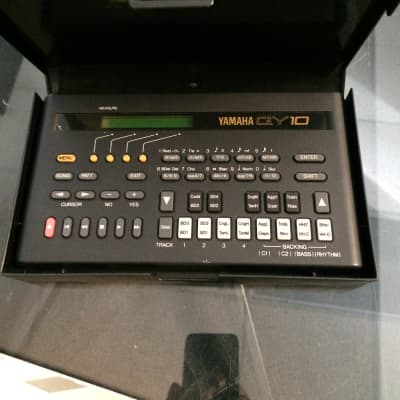
This has been stored in its case for decades! MINT condition! Amazing 32-voice Synth/Sequencer with 26 drum sounds. 8 Track sequencer as well! VERY portable! CREAT ANYWHERE!
Comes with 6 NEW AA batteries!
Company: Yamaha
Model: QY-10
Class: arranger module
Pads: 12
Dates: 1990
Country: Japan
Weight: 0,3 kg
Dimensions: 187 (w) x 25 (h) x 104 (d) mm
Price : 50€
Synthesis: PCM rompler
Technology: AWM
PCM Resolution: 12 bits
Polyphony: 32 voices
Sounds: 30 instruments
Drum samples: 26 PCM
Multitimbric: 8 parts
Sequencer: 8 tracks
Resolution: 1/96
Quantisize: 1/4 ->1/32
Memory: 6000 notes
Chords: 20 presets
Sync: Midi clock
Midi: IN / OUT / THRU
DAC: YM7138
PSU: 12VDC
Yamaha QY10
Sequencing Clinic
Sequencers / Grooveboxes
By Craig Anderton
Published January 1994
Craig Anderton's QY10 goes everywhere with him – and he's developed loads of useful short‑cuts to help QY10 owners make even better use of this brilliant musical notepad.
As the rough equivalent of a 'laptop computer' for musicians, Yamaha's QY10 — a VHS cassette‑sized MIDI sequencer with 31 onboard instrument sounds and a headphone jack for monitoring — is ideal for songwriting, whether you're stuck in an airplane or relaxing on an island. When you get home, you can fine‑tune your songs by transferring them in real time to a computer‑based sequencer (hook the QY10 MIDI out to the computer's MIDI in, sync the two together, and record the QY10's MIDI output).
For the past couple of years the QY10 has been my constant travel companion, and during that time I've learned a few techniques other QY10 aficionados might appreciate... so here they are.
The Perfect Pattern Take
The QY10 Pattern entry process is biased toward step‑time entry, yet good ideas often result from real time improvisation. Although you can record a part in real time as a Pattern loops, real‑time note erasure is difficult so you have to get everything right on the first pass.
Fortunately, you can transfer Song sequencer tracks to Pattern tracks. Suppose you want a Pattern with a four‑bar drum part. Find a song with an empty track, set the track's voice for drums, then begin recording. Since the sequencer tracks are linear, you can play that four‑bar part over and over again until you get it right, or for that matter, play it a little differently each time until four bars really strike your fancy.
Now play back the track and note the four best bars of the performance. Switch over to Pattern mode, then use Get Parts to copy these measures from the Song sequencer track over to the desired Pattern track.
The 'Hidden' Undo Buffer
The QY10 has no undo buffer, although you can always copy a Pattern‑in‑progress to an empty Pattern for backup. A slicker option that allows more flexibility is to use the Put Parts function to save a Pattern part to a track in an empty Song. With four destination tracks per Song and the ability to save a part at any measure in the Song, there's plenty of room for storing alternative takes and copying 'safety' parts.
Put Parts also lets you take advantage of sequencer operations that aren't available for Patterns (such as mixing tracks). For example, suppose you record a drum part into a Pattern, with different drums on different tracks. 'Put' the parts into different sequencer tracks, select Song mode and mix the parts together into one track using the sequence mix function, then return to Pattern mode and 'get' the mixed track for the Pattern.
Avoiding Pattern Reset Problems
Suppose you set up a blank Pattern's parameters (time signature, tempo, measure length, etc.) prior to recording, then record a drum part in real time. You don't like the part, so you erase the track and try again. However, erasing the part means the Pattern is now empty (this also happens if you inadvertently press Exit before recording) so it reverts to its initial defaults, requiring you to re‑enter the Pattern parameters before continuing.
To save those extra keystrokes, during the Pattern parameter setup process, record‑enable any track other than the one on which you want to record (in this example, any track other than RT), then press the > (play) button. Let the Pattern record silence over its full length. As far as the QY10 is concerned the Pattern is no longer empty, so it will not revert to the original parameters if you record a part in a different track and then erase it.
The 96 Pattern Drum Machine
In Pattern mode, the QY10 makes a fine drum machine for practicing. If all you need is drum parts, you can quadruple the number of user Patterns by recording separate drum parts in the RT, BS, CII, and CI tracks. To choose the different parts during playback, press the Trans/Track button, then use the four right‑hand white microkeys to enable or disable the four different drum parts (as shown in the LCD).
Caution: if you use this Pattern in a Song, the RT track will not transpose but the other tracks will, which messes up the drum assignments. To copy a drum part from the BS, CII, or CI track to the RT track within the same Pattern, you'll need to 'put' the part to be copied into a Song sequencer track, then 'get' it into the Pattern RT track.
Real‑Time Song Creation
The QY10 has no provisions for creating a song in real time; you must enter the Patterns to be played and desired transpositions in step time. This is too bad, because it's easy to get some good ideas by going into Pattern mode, and selecting different chord types and transpositions 'on the fly.' If only the QY10 could record your button presses, and convert them into a song...
Music seems to have something to do with memory, and in some ways the QY10 has become like a camera that lets me record musical impressions of where I've been.
The next best option is to feed the QY10 MIDI output into a second sequencer's MIDI in, and sync the two together (I generally sync the sequencer to the QY10, which serves as the master). Put the second sequencer in record mode, select a Pattern on the QY10, start the QY10, then change transposition, Patterns, and chord types at will. The sequencer will record this performance, with different instruments on different MIDI channels. (This assumes your sequencer can record multiple MIDI channels simultaneously.)
Unboring Drum Parts
Preset drum Patterns have an inherent boredom factor, but here's an easy way to improve the situation. In the four Pattern tracks, record the essentials of the part (kick, snare, maybe hi‑hat) on one or two tracks, then record fills (toms, cymbals, etc.) on the other tracks. As you play back the Pattern in real time, press the Trans/Track button then use the white track select microkeys to bring the fills in and out as desired. You can combine this technique with the 'real‑time song creation' tip to record drum Patterns with variable fills into a second sequencer.
Instant Dub Mixes
'Dub' mixes involve taking an existing multitrack recording and muting, soloing, and/or processing tracks to create a mutated version of the tune with recognizable fragments but a different overall feel. As a Song plays, use the track select microkeys to mute and solo various tracks. As with the previous techniques, if you record this into a sequencer a particular dub mix can be preserved for posterity.
Recording 'Mutes' Into A Song
Most songs are constructed by telling the QY10 which Backing Track to play at any given moment, as well as any chord changes. A Backing Pattern will loop until a new one is slated to play; the new Pattern will then start looping.
The biggest problem with this approach is that there is no way to selectively delete individual measures from specific tracks in the Backing Pattern. For example, the bass can't lay out for the first eight bars while everything else plays.
The workaround is not to record the Backing Pattern as one entity, but to record each track of the Backing Pattern individually. In other words, when you go into Song Record mode, don't select BK but select RT, BS, CII, or CI. Then enter the desired Pattern number in step time for each track (also note that in this situation a track can play any Pattern; for example, RT could follow one Pattern's drum part, while BS follows a different Pattern's bass part).
The specified Pattern loops only if recorded as part of the Backing Track, so if you want the BS track to play a four‑bar bass Pattern throughout a 16‑bar section, you'll have to program the bass track's Pattern number at measures 1, 5, 9, and 13. This is what allows for selective muting; for no bass during the first eight measures, start the Pattern number playing at measures 9 and 13. If you've already programmed Patterns at measures 1, 5, 9, and 13, use the Erase job to erase measures 1‑8, or delete the Pattern numbers in step time at measures 1 and 5.
One limitation is that you have to erase a group of measures equal to the Pattern length. In the example given above, if you only erased measure 1, measures 1‑4 would nonetheless disappear because the Pattern length is four bars.
One Last Note...
Before closing, I'd like to mention an interesting QY10 side effect. Music seems to have something to do with memory, and I've found that if I work on a tune in a particular location or setting, playing that tune in the future triggers memories of where it was composed. In some ways, the QY10 has become like a camera that lets me record musical impressions of where I've been; it's an application I never anticipated, but thoroughly enjoy.
Quick Tips
- CHORD STRUMS
The QY10's chord option, which lets you trigger a chord instead of a single note when you press on a micro‑key, is fun but sounds extremely stiff with instruments that are normally strummed (such as guitar). To fix this, go into the step editor, then delay the highest note of the chord by one clock pulse and advance the lowest note of the chord by one clock pulse. The sound is much more interesting, and doesn't have as much of a tendency to 'step on' other instruments occurring on the same beat. - THE MEMO RECORDER
Sometimes a melody line will just pop into your head, and you need to get it down fast before it goes away. Turn off the metronome, and call up a track in an empty song. Just play the melody in free time; don't worry about drums, or the metronome, or backing track, or whatever. You can now work on the 'real' version of the tune in a different song (or pattern), and refer back to the original line if you need to refresh your memory. - SCIENCE FICTION SOUNDS
At the highest octave settings, several instruments produce such severe aliasing that the aliasing becomes a ring modulator‑like effect in itself. This type of sound works well for percussive accents. Conversely, transposing sounds way down makes a rumbling, menacing type of noise you might find useful. - LEADING BASS LINES
When changing from one chord to another in song mode, try changing the chord an eighth or sixteenth note before the measure boundary where you would normally place the change. This often allows the bass and other melodic instruments to anticipate the chord change and lead into it more smoothly. - THE QY10 CHEAT SHEET
The QY10 operating system is pretty complex, and occasionally baffling (how's that for understatement?). I strongly suggest making a reduced photocopy of the manual's function map page, and taping it to the inside top or bottom cover of the QY10 case. You will not believe how much this simplifies the learning process.
All Items Sold AS-IS.
Reverb Buyer Protection
Reverb has your back if your item is lost, damaged, or doesn't match its description. Simply report any issues within 7 days and we'll help you get a full refund.Learn more about Reverb Buyer Protection.
| Listed | 2 months ago |
| Condition | Mint (Used) Mint items are in essentially new original condition but have been opened or played.Learn more |
| Brand | |
| Model |
|
| Finish |
|
| Categories | |
| Year |
|
| Made In |
|
| MIDI I/O |
|
| Analog / Digital |
|
| Polyphony |
|
| Number of Keys |
|
